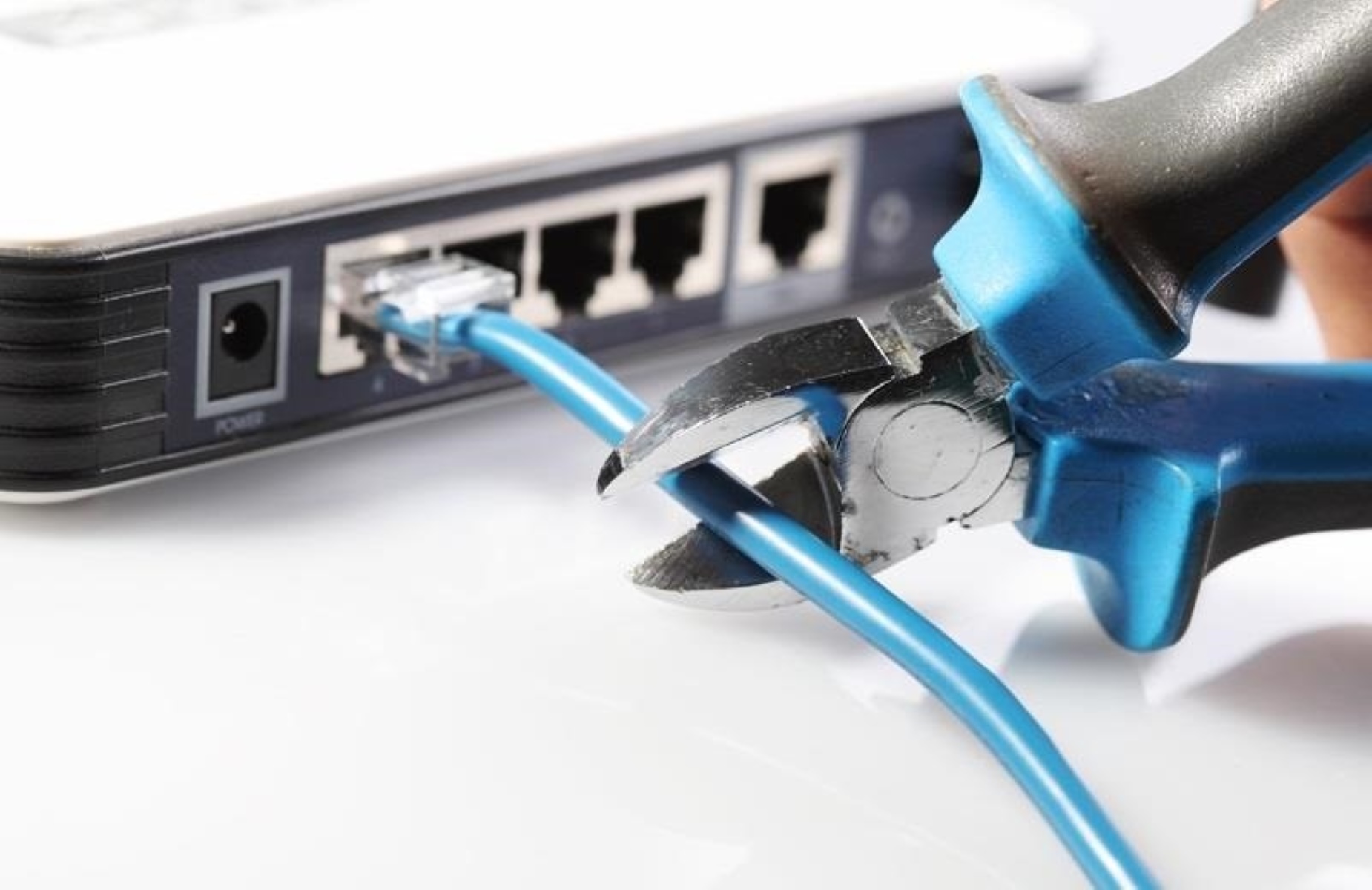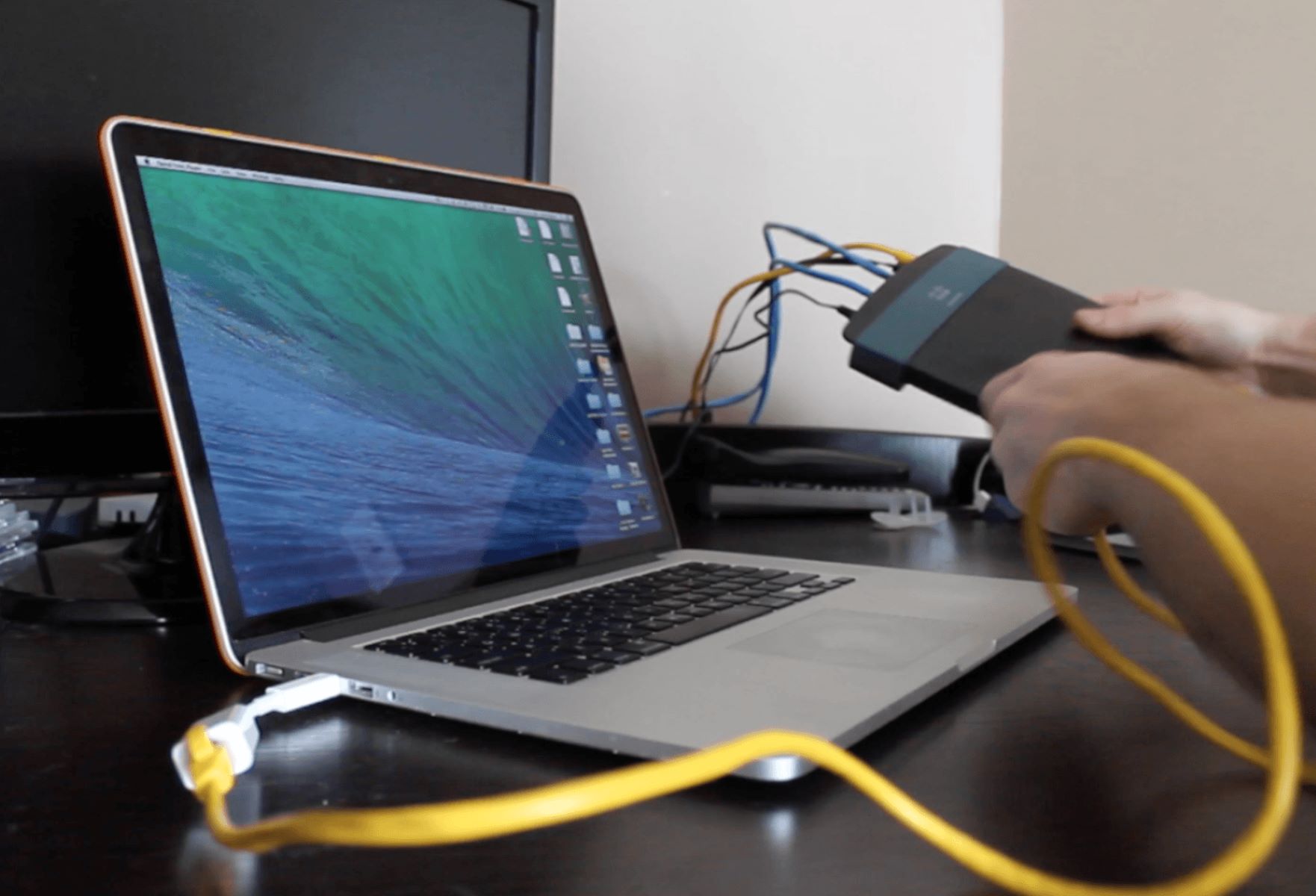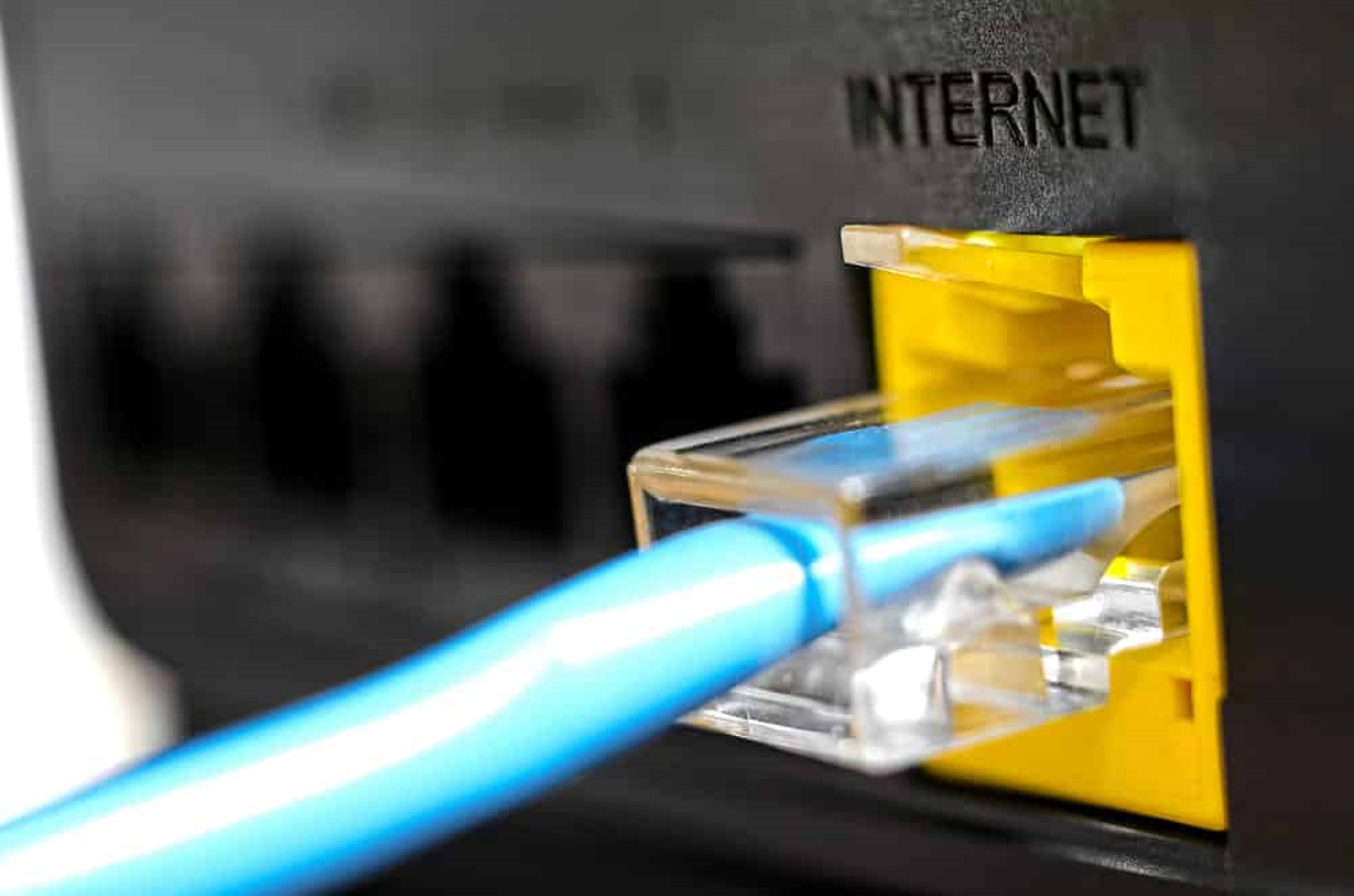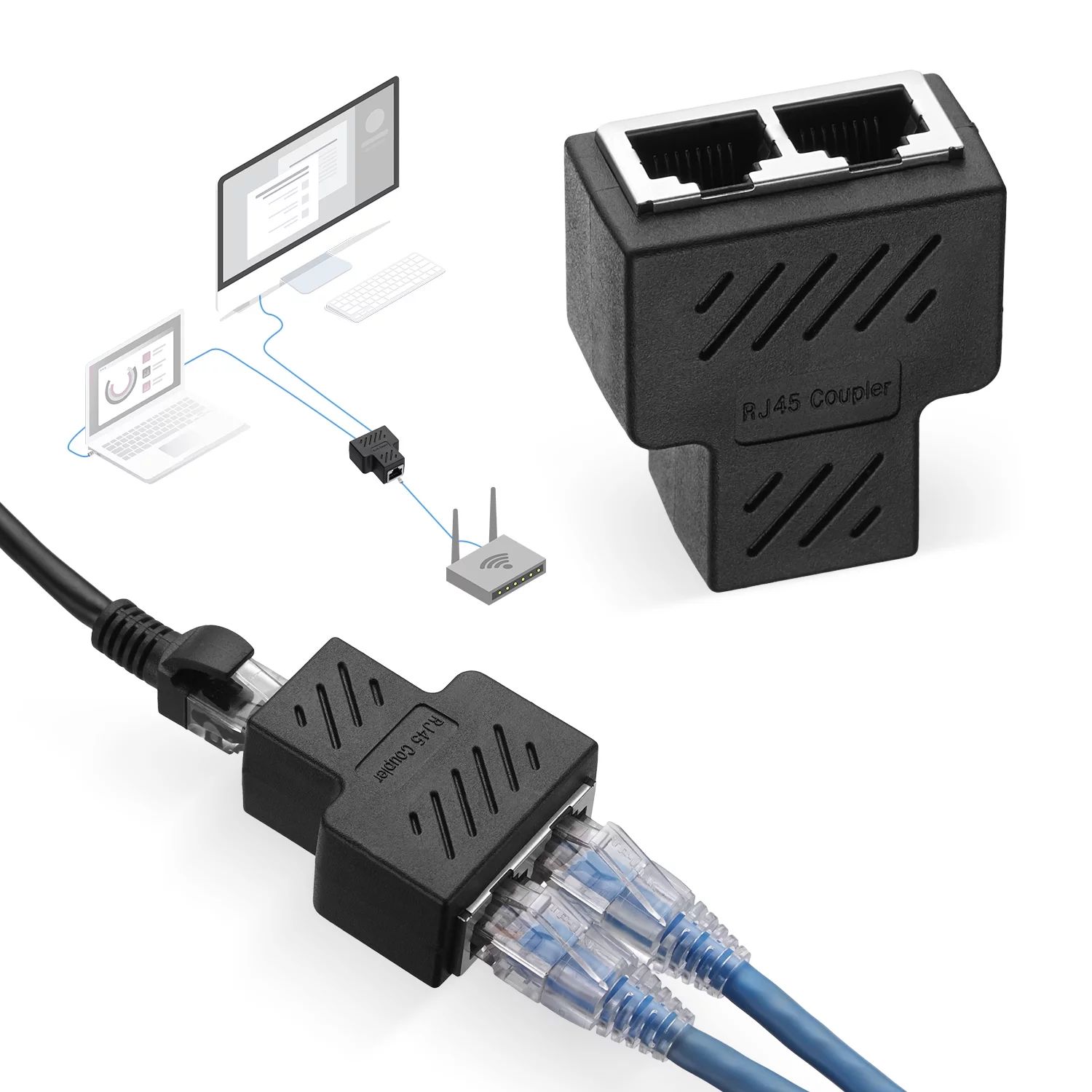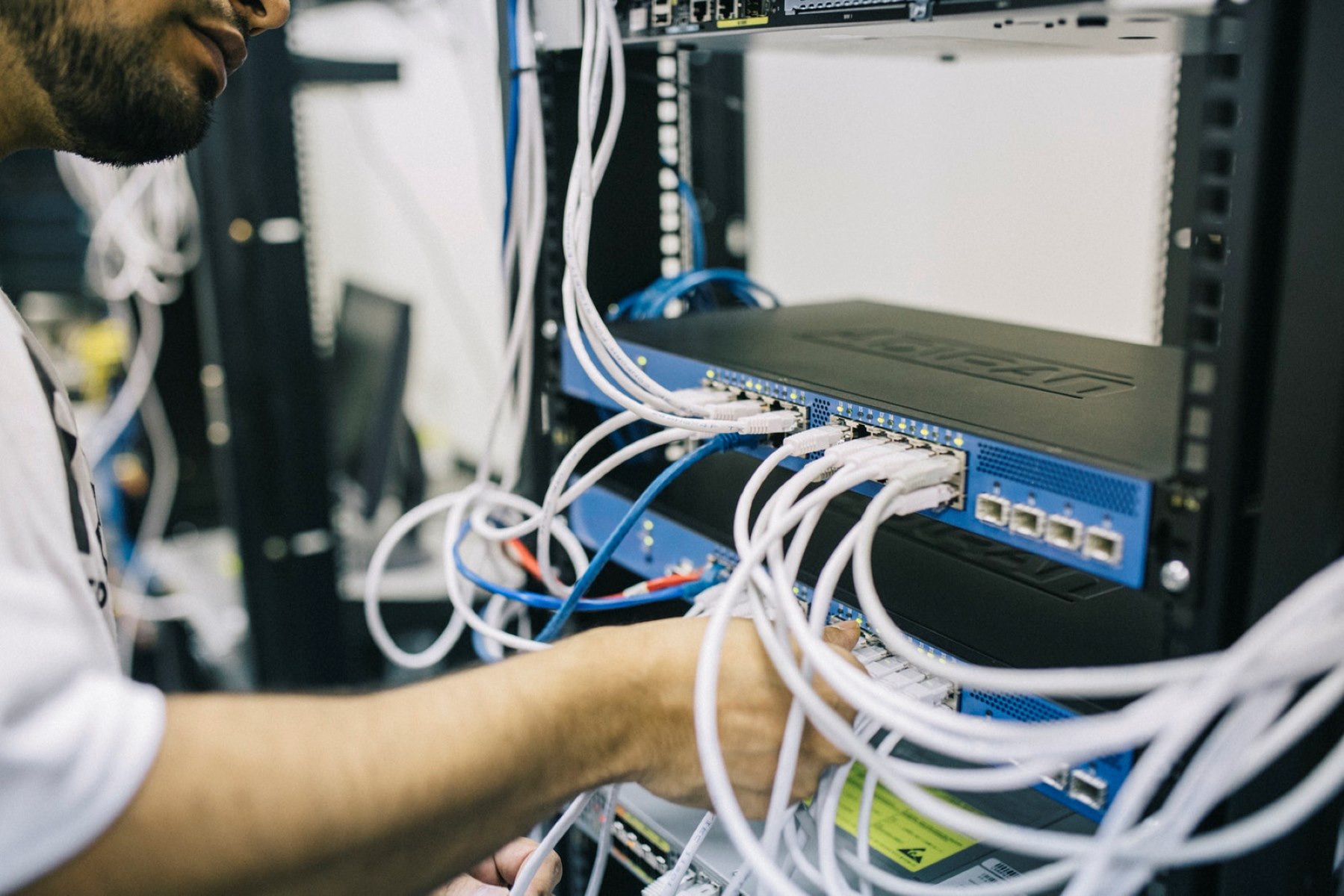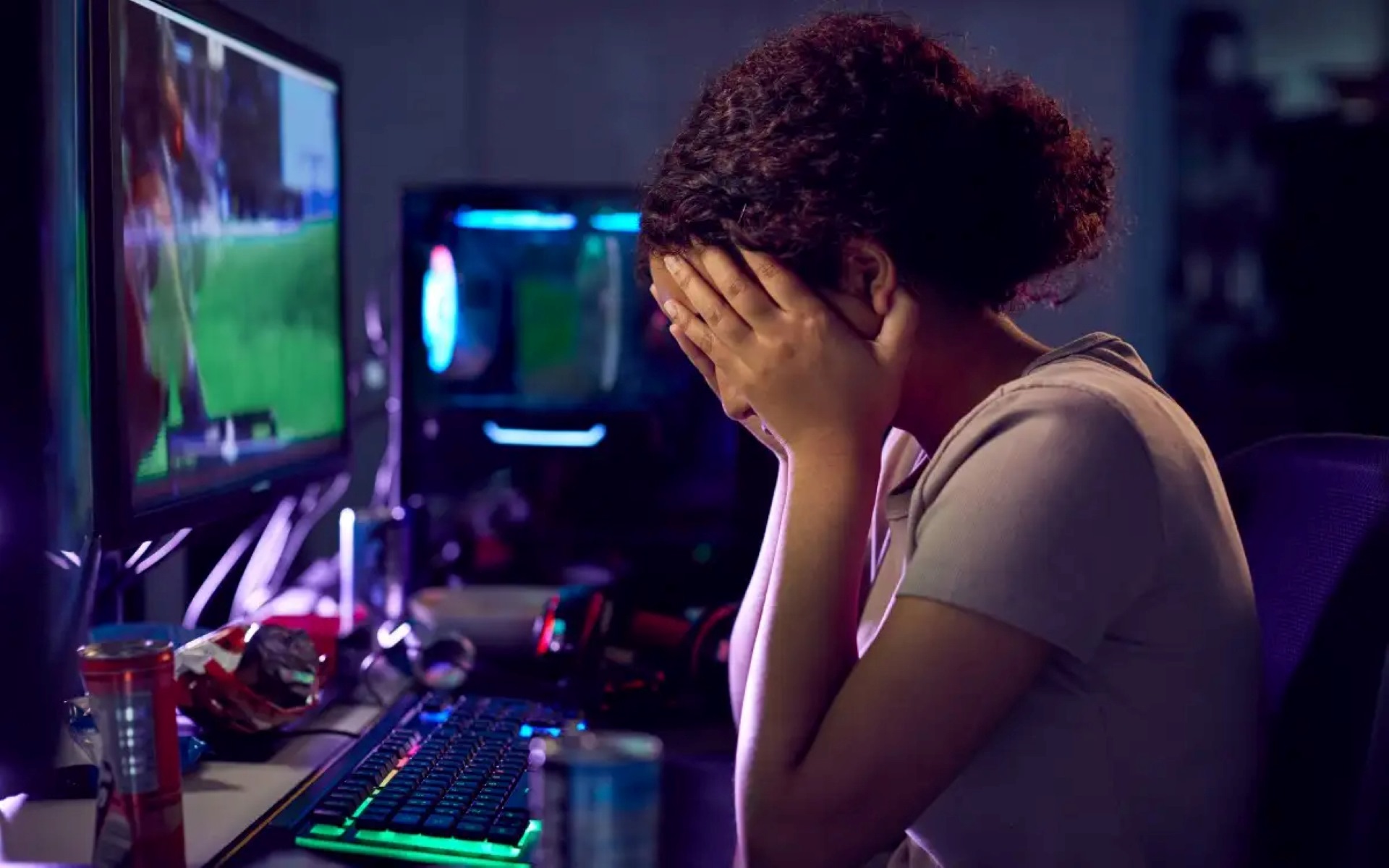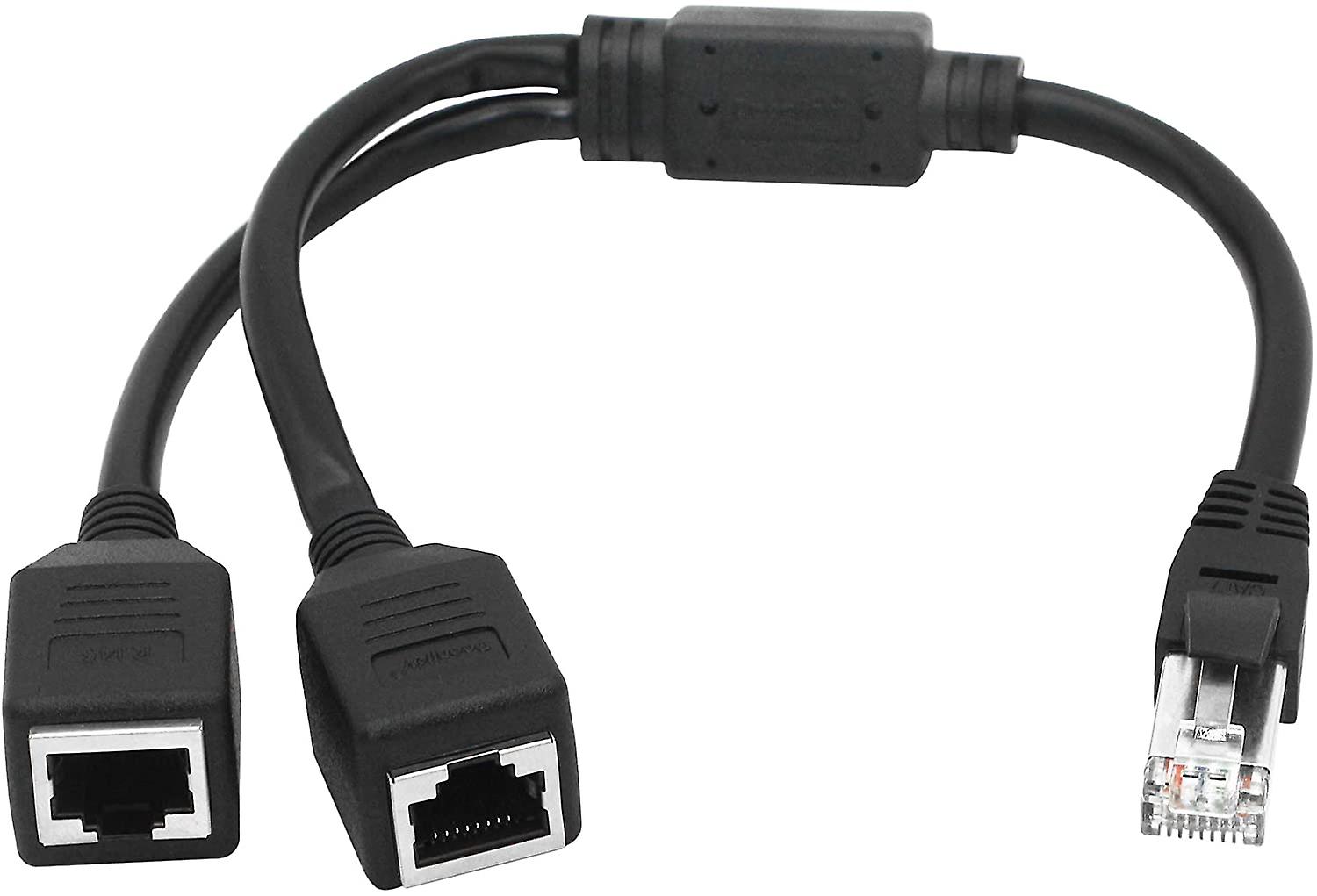Introduction
Ethernet cables are a crucial component in establishing stable and reliable internet connections. However, over time, these cables can become damaged or worn out, resulting in connection issues and slow internet speeds. Fortunately, with a few simple steps, you can easily fix an Ethernet cable and restore its functionality.
Whether the cable has been accidentally cut, chewed by pets, or simply worn out from regular use, this guide will provide you with the necessary instructions to repair it. By following these steps, you can save money on purchasing a new cable and ensure uninterrupted internet access.
Before diving into the process of fixing an Ethernet cable, it’s important to gather all the necessary tools. You will need a pair of wire cutters, wire strippers, a network cable tester, an Ethernet cable crimping tool, and new RJ-45 connectors. It’s important to have these tools on hand to ensure a successful repair.
In the following sections, we will walk you through the step-by-step process of inspecting the cable, identifying the damaged area, cutting out the damaged portion, stripping the wires, arranging them in the correct order, crimping the RJ-45 connector, and testing the cable. By the end of this guide, you’ll have a fully functional Ethernet cable and be back online in no time.
Tools Needed
Before you begin the process of fixing an Ethernet cable, it’s important to gather all the necessary tools. Having the right tools on hand will make the process smoother and more efficient. Here are the tools you’ll need:
- Wire cutters: These will be used to remove the damaged portion of the Ethernet cable.
- Wire strippers: Essential for removing the outer casing of the cable and exposing the wires inside.
- Network cable tester: This tool will help you ensure that the repaired cable is transmitting data properly.
- Ethernet cable crimping tool: Required for attaching the new RJ-45 connector to the repaired cable.
- New RJ-45 connectors: These connectors will replace the damaged ones and ensure a secure connection.
It’s important to invest in high-quality tools to ensure the best results. Low-quality tools may lead to further damage or an inadequate repair. If you don’t already have these tools, you can find them at your local hardware store or online.
Once you have gathered all the necessary tools, you’ll be ready to move on to the next steps in the repair process. Having these tools readily available will save you time and frustration during the repair, allowing you to fix your Ethernet cable accurately and efficiently.
Step 1: Inspect the Cable
The first step in fixing an Ethernet cable is to carefully inspect it for any visible signs of damage. This will help you determine the extent of the problem and decide if repair is necessary.
Start by visually examining the entire length of the cable. Look for any cuts, frayed wires, or exposed conductors. Pay close attention to the connectors at both ends of the cable as they are often subjected to the most wear and tear.
Next, gently flex the cable along its length, feeling for any areas where the wiring may be damaged internally. If you notice any areas that feel loose, kinked, or excessively bent, it is likely that the wires inside have been compromised.
Additionally, check for any signs of physical damage such as bite marks from pets or pinched sections caused by furniture or heavy objects. These could indicate areas where the cable’s integrity has been compromised.
During this inspection, it’s important to look out for any signs of moisture or liquid damage. Exposure to water or other liquids can cause corrosion and affect the performance of the cable.
If you discover any visible damage or suspect that the cable’s performance is being affected, it’s time to move on to the next step of the repair process. Otherwise, if the cable appears to be in good condition, you can skip ahead to testing the cable in the later steps.
By thoroughly inspecting the cable, you can accurately assess the extent of the damage and ensure that you address all the necessary repairs. This will help you determine the best course of action and increase the chances of successfully fixing your Ethernet cable.
Step 2: Identify the Damaged Area
Once you have inspected the Ethernet cable and determined that there is visible damage or performance issues, the next step is to identify the exact location of the problem. This will allow you to focus your repair efforts on the specific area that needs attention.
Start by marking the cable near the connectors at both ends using a small piece of tape or a marker. This will make it easier to identify the damaged portion later on when you cut the cable.
Next, gently run your fingers along the length of the cable, applying light pressure. Pay attention to any sections that feel weak, excessively bent, or show signs of physical damage. These areas are likely to be the source of the problem.
It’s important to note that the damaged area may not always be obvious. Sometimes, internal wiring issues can cause connectivity problems without any visible external damage. In such cases, you may need to rely on the behavior of the cable during the testing phase to pinpoint the exact location of the problem.
Additionally, if you suspect that the connectors themselves are damaged, inspect them closely. Look for bent or broken pins, loose connections, or signs of corrosion. These issues can also contribute to connection problems and should be addressed during the repair process.
By carefully identifying the damaged area, you can focus your repair efforts and avoid unnecessary disassembly of the cable. This targeted approach increases the chances of a successful repair and can save you time and effort in the long run.
Step 3: Cut out the Damaged Portion
After identifying the damaged area of the Ethernet cable, it’s time to remove the compromised portion. Cutting out the damaged section will ensure that you have a clean and reliable connection once the repair is complete.
Before you start cutting, measure around 2 inches (5 cm) beyond the marked area on both ends of the cable. This extra length will provide room for stripping and crimping the wires later on.
Using a pair of wire cutters, make a clean, straight cut through the cable at each of the marked points. Be careful not to damage any of the wires inside the cable while cutting.
Once the damaged section has been removed, examine the newly cut ends of the cable. Ensure that there are no frayed or exposed wires hanging out. If necessary, use the wire cutters to trim any loose ends to ensure a clean and even cut.
By cutting out the damaged portion of the cable, you eliminate any potential issues caused by damaged or compromised wiring. This step sets the stage for the next steps of the repair process, allowing you to move forward with confidence in restoring the functionality of the Ethernet cable.
Step 4: Strip the Wires
After cutting out the damaged portion of the Ethernet cable, the next step is to strip the insulation from the wires. This will expose the individual wires inside the cable, allowing for proper arrangement and connection to the RJ-45 connector.
Start by carefully sliding the wire stripper tool over the cut end of the cable. Be sure to align the cutting blades with the outer insulation, and apply gentle pressure to make a clean cut without damaging the wires underneath.
Once the cut is made, gently rotate the wire stripper tool around the cable to remove the outer insulation. Take care not to cut into the individual wires or remove too much of the insulation, as this can cause connectivity issues.
After removing the outer insulation, you will see eight colored wires inside, along with twisted pairs of wires such as green and white-green, orange and white-orange, blue and white-blue, and brown and white-brown.
Using your fingers or a pair of needle-nose pliers, carefully untwist the pairs of wires without pulling them out of the cable. Keep in mind the color coding and make note of the order in which the wires are arranged.
With the wires untwisted, you can now proceed to strip the insulation from each individual wire. Use the wire stripper tool or a sharp knife to remove about 1/2 inch (1.3 cm) of insulation from the end of each wire.
It’s crucial to ensure that each wire is stripped to the same length and that no excess insulation remains. This will facilitate a secure and proper connection when attaching the RJ-45 connector in the following steps.
By stripping the wires, you prepare them for the next step of arranging them in the correct order. This careful process ensures that the connections are clean and secure, maximizing the cable’s performance and reliability.
Step 5: Arrange the Wires in the Correct Order
Once the wires inside the Ethernet cable have been stripped, the next step is to arrange them in the correct order. Properly organizing the wires ensures that they make the appropriate connections when inserted into the RJ-45 connector.
Start by referring to the color coding standards used for Ethernet cables. The most common standard is called T568B, which arranges the wires as follows:
- Pin 1 (white-orange wire)
- Pin 2 (orange wire)
- Pin 3 (white-green wire)
- Pin 4 (blue wire)
- Pin 5 (white-blue wire)
- Pin 6 (green wire)
- Pin 7 (white-brown wire)
- Pin 8 (brown wire)
Hold the cable so that the stripped end is facing you. Arrange the wires in the correct order, making sure they are flat and in a neat row. This will make it easier to insert them into the RJ-45 connector.
Once the wires are arranged, use your fingers to straighten them and ensure that they are aligned and tightly packed together. This will help maintain a consistent and secure connection.
With the wires in the proper order and alignment, carefully trim any excess length, ensuring that they are approximately 1/2 inch (1.3 cm) long. This will prevent them from getting tangled or preventing a proper connection when inserted into the connector.
By arranging the wires correctly, you ensure that the connections inside the RJ-45 connector correspond to the proper pins. This step is crucial to establishing a reliable and functional Ethernet connection.
Step 6: Crimp the RJ-45 Connector
After arranging the wires in the correct order, the next step in fixing your Ethernet cable is to crimp the RJ-45 connector onto the stripped end of the wires. The crimping process will secure the wires in place and create a stable connection.
Start by inserting the arranged wires into the RJ-45 connector. Ensure that each wire goes into its corresponding slot inside the connector. Push the wires in until they reach the end of the connector, making sure they are fully inserted.
Hold the connector and the cable firmly and align them with the crimping tool. Make sure the connector is placed in the correct position within the tool to ensure a proper crimp. Apply gentle pressure to secure the connector in place.
Once the connector is securely positioned in the crimping tool, squeeze the handles firmly to crimp the connector onto the wires. This action will compress the connector’s metal pins, creating a strong and reliable connection between the wires and the connector.
Release the handles of the crimping tool and remove the crimped connector from the tool. Give it a gentle tug to ensure that the wires are firmly anchored and will not come loose.
Repeat the crimping process on the other end of the Ethernet cable if necessary. Make sure to align the wires properly with the pin configuration of the RJ-45 connector to maintain consistency.
By crimping the RJ-45 connector onto the wires, you create a secure and stable connection. This step is essential for ensuring the proper transmission of data and maintaining a reliable Ethernet connection.
Step 7: Test the Cable
After completing the previous steps, it’s crucial to test the repaired Ethernet cable to ensure that it is functioning properly. Testing the cable will help verify that the connections are secure and that data can be transmitted without any issues.
To test the cable, you will need a network cable tester. This tool allows you to verify the continuity of the wires and detect any potential wiring problems or connectivity issues.
Connect one end of the repaired cable to the network cable tester and the other end to a compatible device, such as a router or a computer. Turn on the network cable tester and follow the manufacturer’s instructions to initiate the testing process.
The network cable tester will indicate whether the cable is properly functional. It will check for continuity, test each wire for connectivity, and detect any potential faults or wiring errors. If the cable passes the test, it means that the repair was successful, and you can confidently use the Ethernet cable for your networking needs.
However, if the cable fails the test or there are detected issues, you may need to recheck the wiring, ensure proper crimping, or consider replacing the RJ-45 connector. It’s essential to troubleshoot any problems and address them promptly to ensure a reliable and efficient Ethernet connection.
By testing the cable, you can verify that the repairs were effective, and the Ethernet cable is in proper working condition. This step gives you peace of mind and confidence in using the repaired cable for your internet connectivity needs.
Conclusion
Fixing a damaged Ethernet cable may seem daunting, but with the right tools and step-by-step guidance, it’s a manageable task. By following the outlined steps, you can successfully repair your Ethernet cable and restore its functionality.
Starting with inspecting the cable for visible damage, identifying the specific area of concern, and cutting out the damaged portion, you can ensure that you’re working with a clean and well-prepared cable. Stripping the wires and arranging them in the correct order sets the stage for crimping the RJ-45 connector, creating a secure connection between the wires and the connector. Finally, testing the cable with a network cable tester confirms that the repairs were successful and the cable is ready to be used.
Fixing your Ethernet cable not only saves you the cost of purchasing a new cable but also gives you the satisfaction of resolving the issue on your own. With a properly repaired cable, you can enjoy stable and reliable internet connections once again.
Remember, attention to detail and taking the time to carefully follow each step is crucial for a successful repair. Additionally, investing in high-quality tools ensures better results and prevents further damage during the repair process.
Now that you have the knowledge and instructions to fix an Ethernet cable, you can confidently tackle any connectivity issues that may arise. Keep this guide handy for future reference, and empower yourself with the skills to troubleshoot and resolve cable problems whenever they occur.
So why wait? Get your tools ready, follow the steps, and bring your Ethernet cable back to life.







